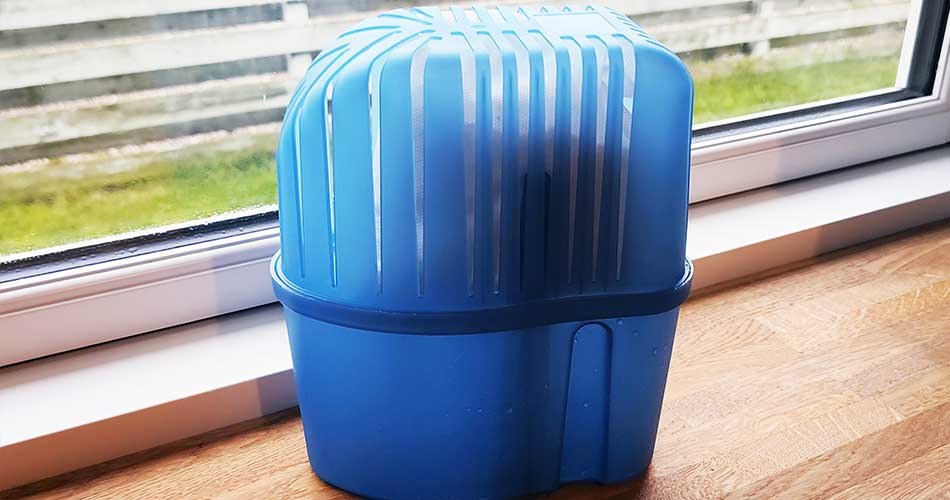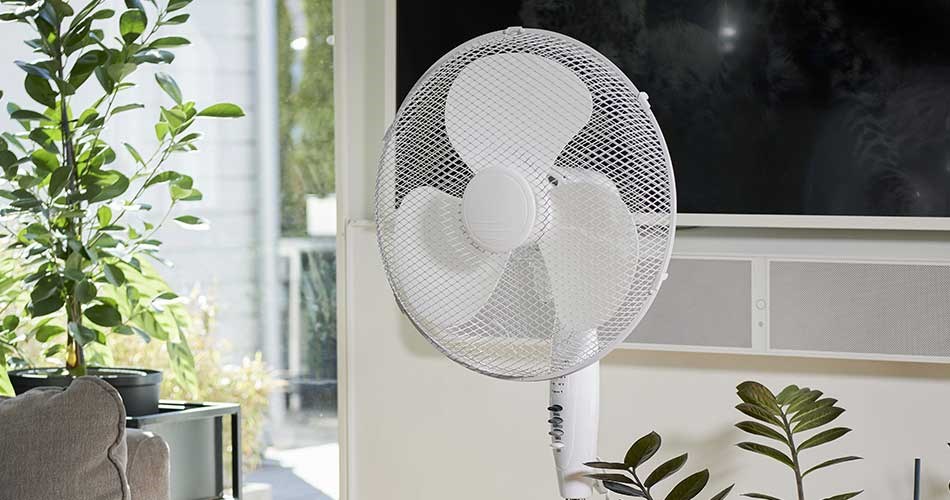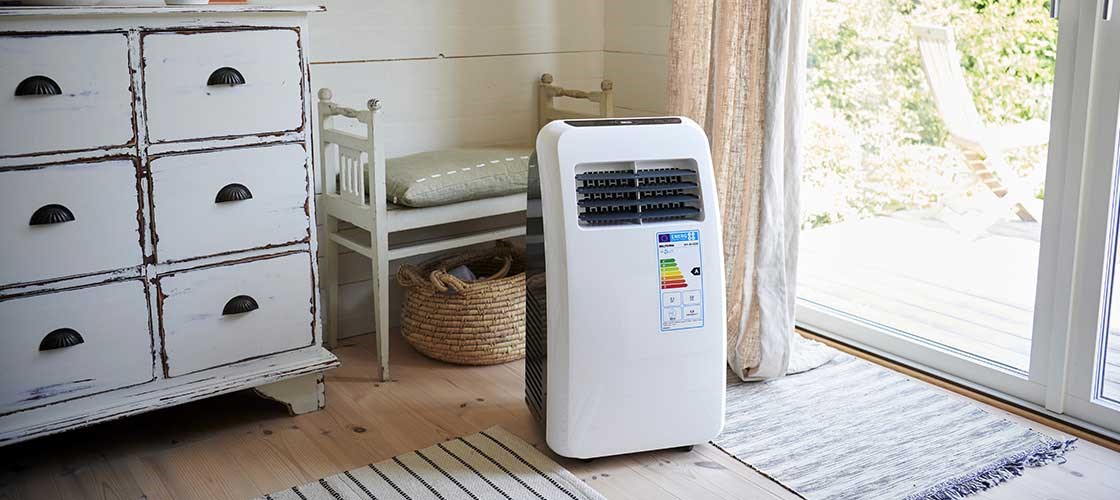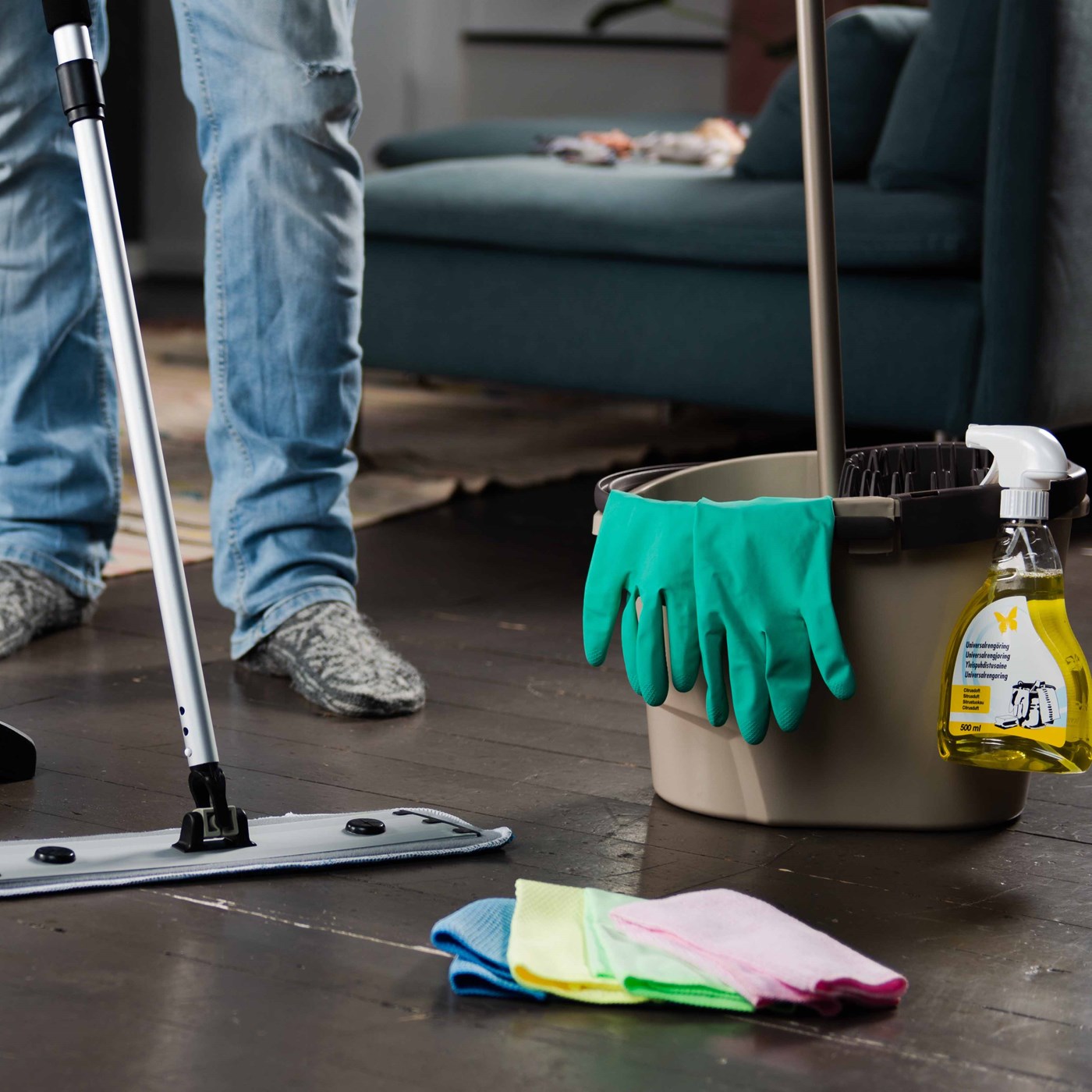Humidity in your home: Everything You Need to Know
We take a deep dive into what humidity is, how you can work out what your humidity levels are at home, and we give you tips as to how you can regulate it if it is too high or too low. This way, you can create a healthy and comfortable indoor climate in your home.
Humidity in your home: What does it mean?
When we talk about humidity at home, we are referring to the current amount of water vapour present in the air. This is actually a very important factor when it comes to your indoor climate because the amount of water vapour in the air is very significant for a healthy and comfortable indoor climate. When talking about humidity, we differentiate between high and low humidity.
High humidity at home means that the air contains large amounts of water vapour, whereas low humidity means that the air contains small amounts of water vapour. Both can lead to problems with the indoor climate and your health.
That is why it is important that you are aware of the level of humidity in your home, and this is what we will go into depth on here.
What should the relative humidity of a house be?
To create the best possible indoor climate at home, it is important that you have total control over the relative humidity in your house.
We recommend a humidity of between 40-60%. Within that exact range, you will have the best conditions to create a healthy and comfortable indoor climate. During the summer, however, it is better that the humidity be around 60-65%, and in winter in should ideally be around 40-45%.
The consequences of high or low humidity
If the humidity in your house exceeds recommended limits, then there are a range of different consequences. If the humidity is too high, this can lead to damage from the damp, mould and a generally poor indoor climate to live in. Whereas if the humidity is too low, it can lead to dry, irritated mucous membranes and irritation to your eyes and throat.
That is why it is so important that you are aware of what the humidity in your home is. Thankfully, you can check for the different signs yourself, and you can even measure them.
How to measure the humidity in your home
You can actually measure the humidity of your home with a hygrometer, and it is easier than you might think. The hygrometer allows you to easily and accurately find out the level of humidity in your home. A hygrometer is a small, practical instrument that measures humidity and the amount of water vapour in the air.
We have collected together four tips for how to use the hygrometer to measure whether you have high or low humidity at home.
- To get the most accurate measurements, we recommend placing the hygrometer in the middle of the room, away from windows and sources of heat.
- It is a good idea to take measurements in several different rooms as the humidity can easily vary from room to room.
- It may also be a good idea to measure at different times of day, as it can also vary throughout the day.
- You need to pay attention to the average of the measurements if they show that humidity is too high or too low.
- If humidity is below 30-50%, then it is low, and if it is above 30-50%, then it is on the high end of the scale.
Keeping an eye on the humidity in your house is important for creating a healthy and comfortable indoor climate. A hygrometer offers you a simple and effective way of helping you do this.
Do you have low humidity at home?
Although it is most common that you have high humidity at home, low humidity can also be a problem. For instance, it can lead to different issues such as dry mucous membranes, irritation to your eyes and throat and damage to wooden furniture.
Thankfully just as with high humidity, there are several things you can do to increase the humidity of your home. In fact, you should do the exact opposite of what we recommend to lower your humidity.
- Remember to have good ventilation: Even though it may seem wrong, it is still important to air your home when you have low humidity. It can help to balance the humidity of the home.
- Use a humidifier: Humidifiers can be an effective solution for increasing humidity. They add water vapour to the air, and you can easily set them to keep a specific humidity in a room.
- Get more plants: Plants can actually add moisture and increase humidity through photosynthesis.
- Try to dry clothes indoors: Even though it may seem wrong, drying clothes indoors for a period can actually help to increase humidity.
- Avoid turning on your extractor fan: Creating more steam at home is an easy way to increase humidity. You can actually just boil water in a pot and the steam will spread around the room.
So, there are many tactics you can use if you are struggling with low humidity at home. Using these will help create a more comfortable indoor climate to be in.
Four signs that you have high humidity at home
Are you unsure whether the humidity at home is a little too high? Here are some of the typical signs that you should look for.
- Condensation on your windows: A clear sign that your humidity is on the high end is condensation on your windows – particularly in the morning when you get up. This happens because the warm, humid air meets the cold glass and creates condensation.
- Damp and discoloured moulding on your windows: Have you noticed that the moulding on your windows is damp or has changed colour? This may be a sign of too high a humidity.
- Stuffy or musty smell: Have you noticed that there is often a stuffy smell in one or more rooms of your home? Then this may also be a sign of high humidity.
- Mould: If you discover mould, then that is a clear sign that need to do something about the high humidity. Mould loves humid environments.
You should therefore pay attention to the different signs if you want to get the best humidity possible at home.
Where high humidity comes from
Do you have high humidity at home, or are you unsure why it is so high? Luckily, we can help. There may be several reasons for this:
- Poor ventilation
- Infrequent airing and draughts
- Drying clothes inside
- Steam from the shower
- Steam and smoke from cooking
- Rooms that are unheated or too cold
If you want to maintain a healthy and comfortable indoor climate, it is important that you are aware of why you might have high humidity at home so you can do something about it. Below, we will tell you want you can do if you find out that high humidity at home.

Getting good humidity at home
High humidity at home can be challenge for many homeowners, but luckily there are a number of things you can do to limit it and get it down to a good level. See what you can do here.
- Ventilation: Ensure that you have electric ventilation at home using a ventilation system. It will help you to replace humid air with fresh, dry air.
- Airing and draughts: Open your windows every day for five-ten minutes in different rooms to create a good through-draught. This will help to remove moisture indoors and improve the air quality.
- Dry clothes outside: Wet clothes add moisture to the air when they dry on an airer inside. So, try to dry clothes on a clothesline outside or a ventilated room if possible so the humidity will automatically decrease.
- Steam from the shower: After a warm shower, you should open the window to get rid of the steam. For ventilation to work as best it can, new, fresh air needs to come in, and the humid air needs to be ventilated out. It may, therefore, be a good idea to install a bathroom extractor fan, if this is an option.
- Steam from cooking: When you cook food on the hob, you should always turn the extractor fan on. This will help to remove the steam and reduce humidity.
- Dry condensation from windows: If condensation forms on your windows when you get up in the morning, dry them with a tea towel. Moisture spreads quickly, and persistent condensation can lead to even more moisture issues.
- Heat all rooms in your home: When warm air comes into an unheated room, humidity will increase and condensation can form. So, you need to make sure that all rooms in your home are adequately heated, and leave your inside doors open so heat can distribute evenly.
- Use a dehumidifier or moisture absorber: If you have persistent problems with high humidity at home or pronounced damage from the damp, then a dehumidifier or moisture absorber can be a great help. They remove excess moisture from the air and help to create a healthy indoor climate.
- Use of other air regulation aids: An air purifier, air-conditioning system, desk fan or a floor fan can also help to improve your air quality, especially if your humidity is high.
As you can probably see, there are lots of different methods you can use to reduce the humidity in your home.
Ventilation during the summer and winter
Ventilation is important the year round, but you need to adapt it to the specific needs of the season.
During the summer, ventilation is important to keep the indoor temperature cool and comfortable. It also helps to remove moisture that may accumulate if you use an air conditioner or often have the windows open. In fact, ventilation in the summer can also help to reduce the risk of mould and improve your indoor air quality.
Ventilation is also important during the winter. However, the aim this time is to remove moisture and pollutants from the indoor air. In winter, you will typically have the heating on, which can help to dry out the indoor air and reduce humidity. That is why it is important that you regularly air out your home and reduce the risk of the air becoming too dry.
How to use a dehumidifier at home
A dehumidifier can be a great help if you have persistent problems with too much humidity at home – especially if you are experiencing damage from the damp. It works by taking in air, removing the moisture and then blowing out the dry air back into the room. We have gathered together some advice for you need to look out for if you use a dehumidifier at home.
- It is important that you make sure that you regularly empty the water container so the dehumidifier can continue to work effectively.
- Place the dehumidifier in a place where the air can circulate freely around it – ideally in the middle of a room.
- Keep doors and windows closed while the dehumidifier is on so that it does not use too much energy.
- If you have water damage, you need to make sure that you reduce the extent of the damage while the dehumidifier is running.
- It is a good idea to use the dehumidifier while drying clothes indoors if it is not possible to dry them outside.
- If you find that you have serious moisture issues, you should keep the dehumidifier on for several weeks, and sometimes around the clock.
A dehumidifier can be an effective tool in fighting unwanted humidity at home, but it is important that you know how to use it correctly.
Using an air purifier, air-conditioning system or a fan
Like a dehumidifier, an air purifier, air-conditioning system or a table or floor fan are also great tools for improving the air quality in your home. In contrast to a dehumidifier, these various tools are typically used for smaller moisture problems and in particular to get cleaner and more comfortable air in a room.

An air purifier can be particularly effective as it filters the air and removes excess moisture. An air-conditioning system can also help to keep humidity at an appropriate level by regulating the temperature in a room. A table or floor plan may also be helpful as both circulate the air and help to reduce humidity in the air.




